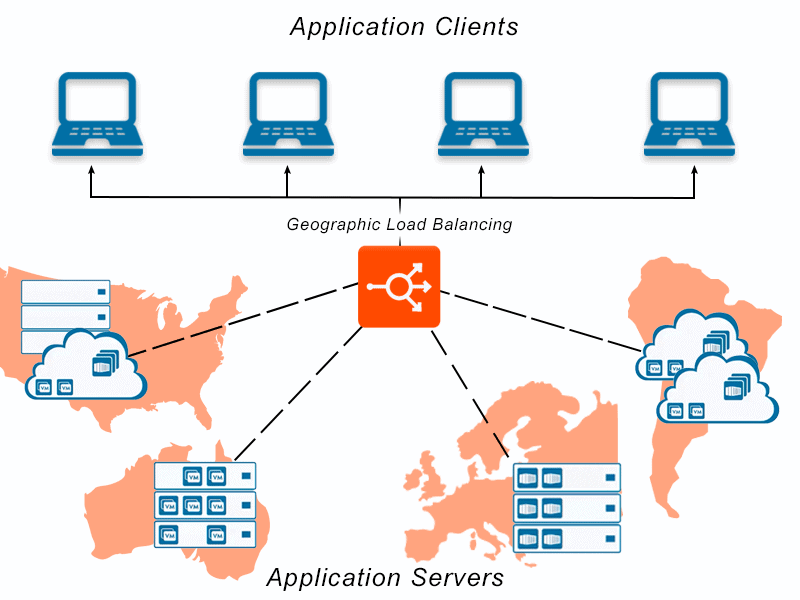Geographic Load Balancing Definition
Geographic Load Balancing redistributes application traffic across data centers in different locations for maximum efficiency and security.

What Is Geographic Load Balancing?
Geographic load balancing redistributes application traffic across data centers in different locations for maximum efficiency and security.
While local load balancing happens within a single data center, geographic load balancing uses multiple data centers in many locations.
What Is Geographic Server Load Balancing?
Geographic server load balancing, also known as global server load balancing (GSLB), is the distribution of traffic across servers located in multiple geographies. The servers can be on-premises or hosted in a private or public cloud.
Geographic server load balancing is especially useful in time of disaster, allowing companies to recover information and avoid shutting down operations. The geographic server load balancer can detect a server failure and automatically divert requests to the other geographic locations.
What Is DNS Geographic Load Balancing?
DNS geographic load balancing configures a domain in the Domain Name System (DNS) so requests are distributed across multiple servers in various locations.
Online algorithms for geographical load balancing reroute traffic based on data and other parameters like location, availability and performance. When the browser resolves the hostname to an IP address in DNS load balancing, the traffic will be sent to a web server that can handle the information with little latency.
Does The VMware NSX Advanced Load Balancer Offer Geographic Server Load Balancing?
Yes. The VMware NSX Advanced Load Balancer delivers global server load balancing (GSLB), also known as geographic server load balancing, for enterprise customers. This capability includes:
- Active / Active data center traffic distribution
- Active / Standby data center traffic distribution
- Geolocation database and location mapping
- Data center persistenceRich visibility and metrics for all transactions
The VMware NSX Advanced Load Balancer software load balancer is intent-based. It delivers elasticity and intelligence across every cloud and can be managed from a single, centralized controller.
For more on the actual implementation of load balancers, check out our Application Delivery How-To Videos or watch the Global Server Load Balancing How To Video here:
For more information on geographic load balancing see the following resources: